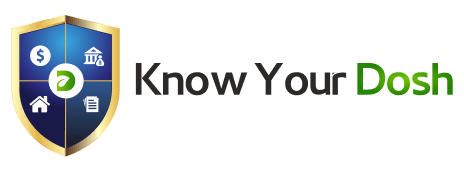Summary:
• Choose your method: Manual (4+ hours setup, weekly maintenance) vs Automated (15-20 minutes, minimal maintenance)
• Gather information: Bank logins, family member emails, shared financial goals
• Set permissions: Decide who sees what and who can make changes

Sarah spent three weekends building the “perfect” family finance spreadsheet. Colour-coded categories, automatic calculations, shared access, she thought she’d solved everything.
Six months later? The spreadsheet sits forgotten. Bank balances are months out of date. Her husband stopped updating after week two. Their older teenager never figured out how to use it.
Sound familiar? Family dashboard setup seems simple until you hit the reality of maintenance, human error, and busy family life.
Why Your Family Needs a Financial Dashboard
Families without shared financial visibility make expensive mistakes daily:
- Parents duplicate bill payments while kids overspend allowances
- Investment opportunities missed because no one knows available funds
- Emergency decisions delayed because nobody has the complete picture
Manual vs Automated: The Real Comparison
Manual Method (Spreadsheets)
Time Investment:
- Setup: 4-6 hours
- Weekly maintenance: 90 minutes
- Monthly reconciliation: 3 hours
Pros: Free, completely customisable
Cons: Formulas can break, requires ongoing maintenance, family members stop participating
Automated Method (Platforms)
Time Investment:
- Setup: 15-20 minutes
- Maintenance: Minimal
- Monthly review: 10 minutes
Pros: Automatic updates, built for families, professional security
Cons: Monthly cost (usually £10-30)
Manual Setup: The DIY Route
Step 1: Choose Your Platform (15 minutes)
Google Sheets (recommended) real-time collaboration, works everywhere, free
Step 2: Build Basic Structure (45 minutes)
Create separate sheets for Assets (bank accounts, investments, property values), Liabilities (mortgages, loans, credit card balances), and Renewals (insurance policies, subscriptions, memberships with their renewal dates). This gives you a complete family financial snapshot beyond just monthly spending.
Step 3: Set Up Family Access (20 minutes)
- Parents: Full editing access
- Teenagers: Edit their sections, view family totals
- Young kids: View savings goals only
Step 4: Create Update Process (15 minutes)
Daily: Enter expenses (whoever spent money)
Weekly: Reconcile with bank statements
Monthly: Full analysis and next month planning
The Manual Reality Check
Most families abandon spreadsheets within 6 months. Why?
- Formula errors break everything
- Bank balance sync is always behind
- Family participation drops off quickly
- Security concerns with financial data in spreadsheets
Automated Setup: The Smart Route
Step 1: Platform Selection (5 minutes)
Look for:
- Bank-level security
- Multi-user access with permissions
- Real-time bank synchronisation
- Mobile apps for everyone
Step 2: Connect Everything (5-10 minutes)
- Sign up and verify email
- Connect bank accounts (read-only, secure)
- Add family members with appropriate access
- Set up family goals
Step 3: Customise (5 minutes)
- Set family savings goals
- Enable notifications
- Download mobile apps
Done. Your dashboard updates automatically from here.
Advanced Features That Actually Matter
Automatic Goal Tracking: See vacation fund progress without manual calculations
Bill Reminders: Never miss payments with smart notifications
Real-Time Updates: Everyone sees current balances instantly
Security: Bank-level encryption, not vulnerable spreadsheet files
Common Setup Mistakes
❌ No family buy-in: Include everyone in goal-setting discussions
❌ Security shortcuts: Use proper permissions, not shared passwords
❌ Perfectionism: Start simple, improve gradually
Why Automated Wins Every Time
Manual systems fail because:
- Maintenance burden overwhelms initial enthusiasm
- Technical problems require constant troubleshooting
- Family members can’t or won’t keep up with updates
- Data security becomes a growing concern
Automated systems succeed because:
- They work automatically without daily effort
- Professional security handles data protection
- Family-friendly design keeps everyone engaged
- They scale with your growing complexity
Your Decision Framework
Choose Manual If:
- You love spreadsheet management
- Your finances are very simple
- You have 2+ hours weekly for maintenance
- All family members are tech-savvy
Choose Automated If:
- You want financial coordination without technical work
- Your family includes different technical comfort levels
- You prefer professional security over DIY solutions
- You value time over saving a few pounds or dollars a month
The Bottom Line
Setting up family financial coordination isn’t the hard part, but maintaining it is.
Manual approaches work for highly motivated families with simple finances and plenty of time. Everyone else discovers that automated solutions provide better results with less effort.
The question isn’t whether your family needs better financial coordination. It’s whether you want to spend weekends troubleshooting spreadsheets or actually enjoying your improved finances.
Ready for the simple path? Know Your Dosh eliminates all the technical complexity while providing better family coordination than any spreadsheet.
15-minute setup. No maintenance. Bank-level security. Happy families.
Start for free today (no trial or auto-renew) and join families across 42 countries who chose automated success over manual frustration.






